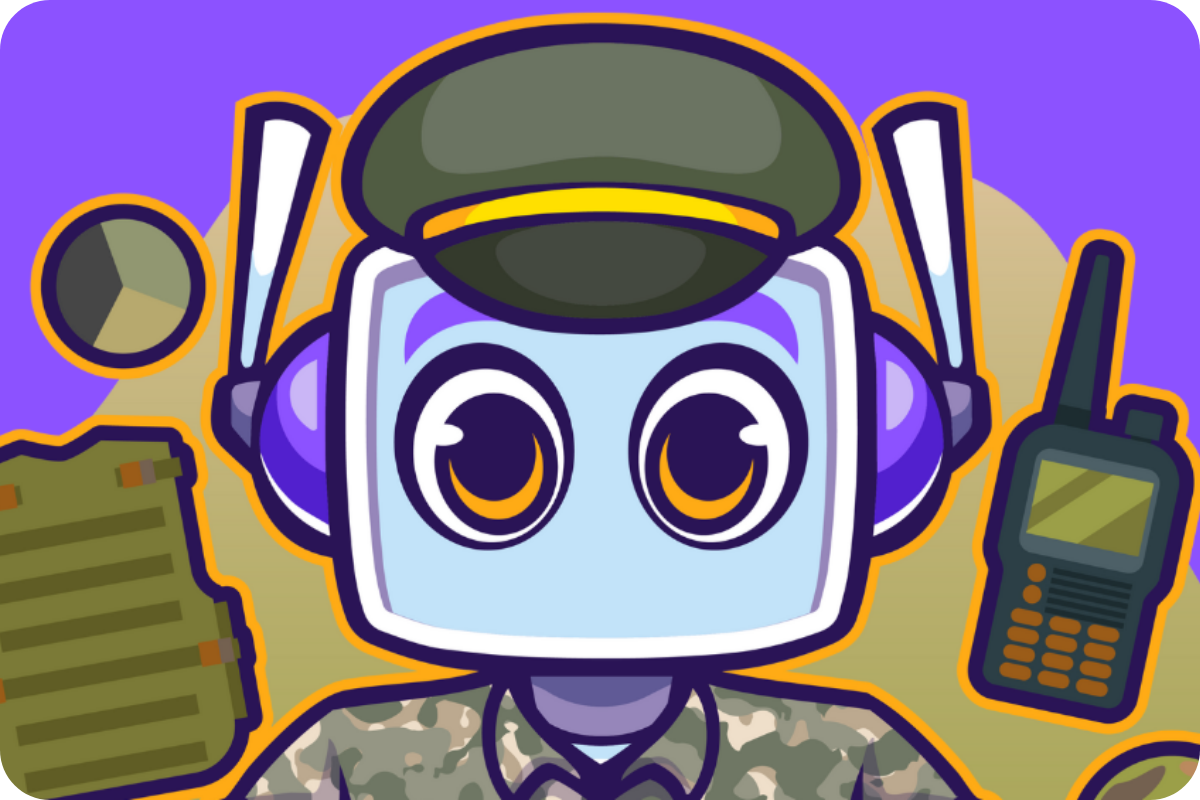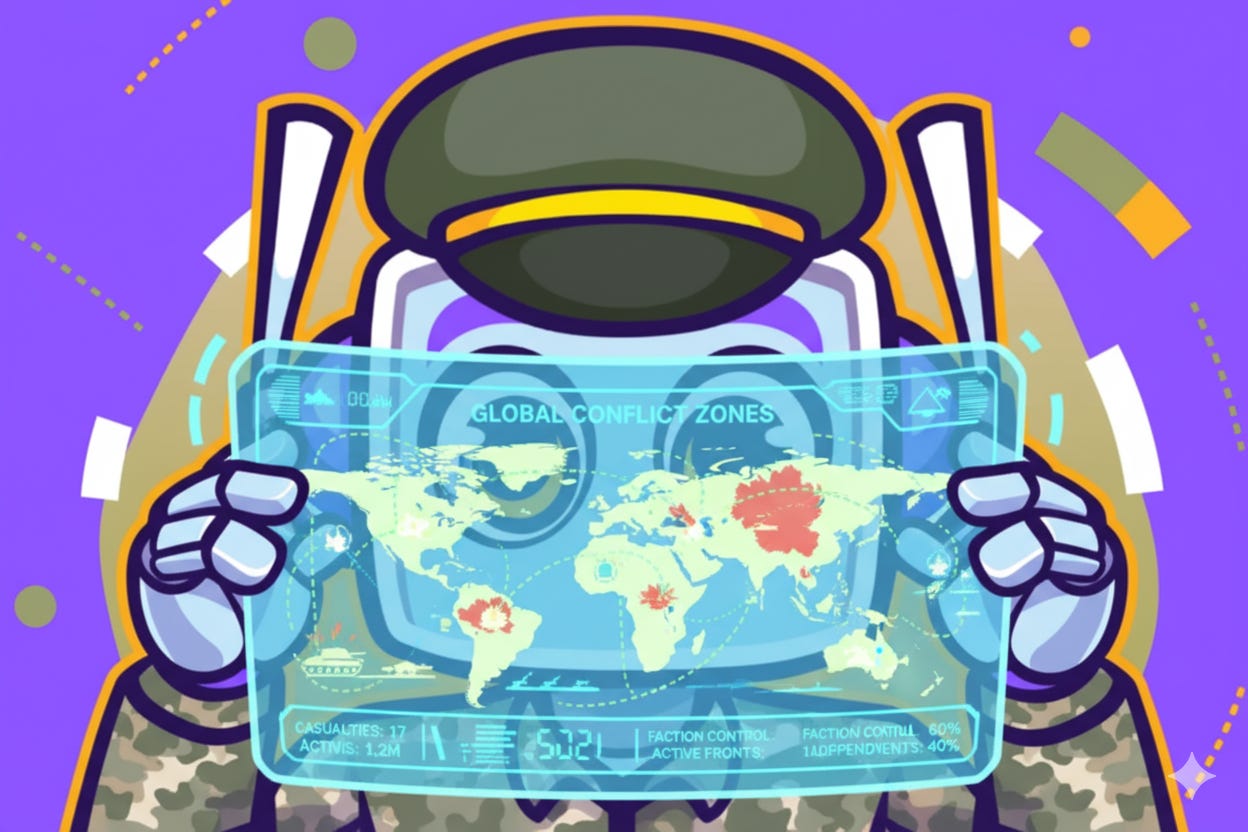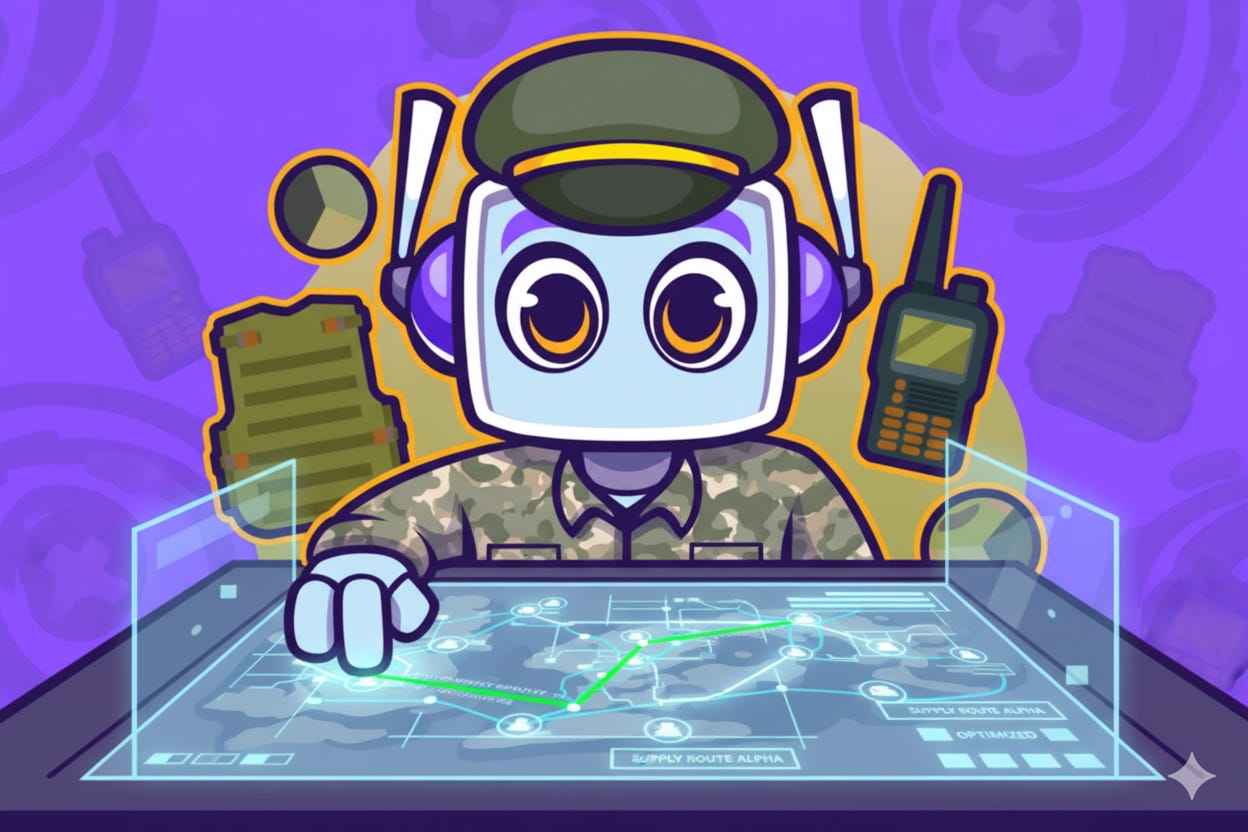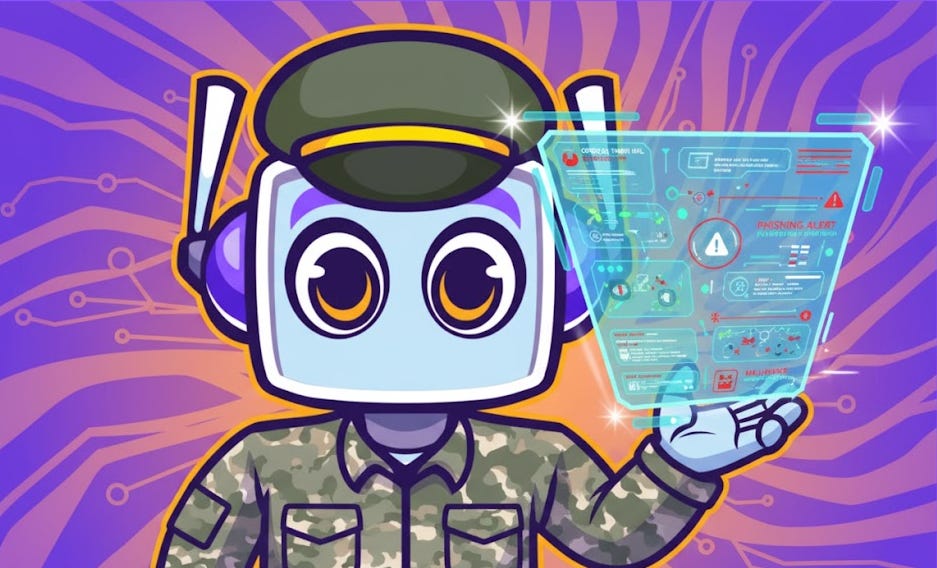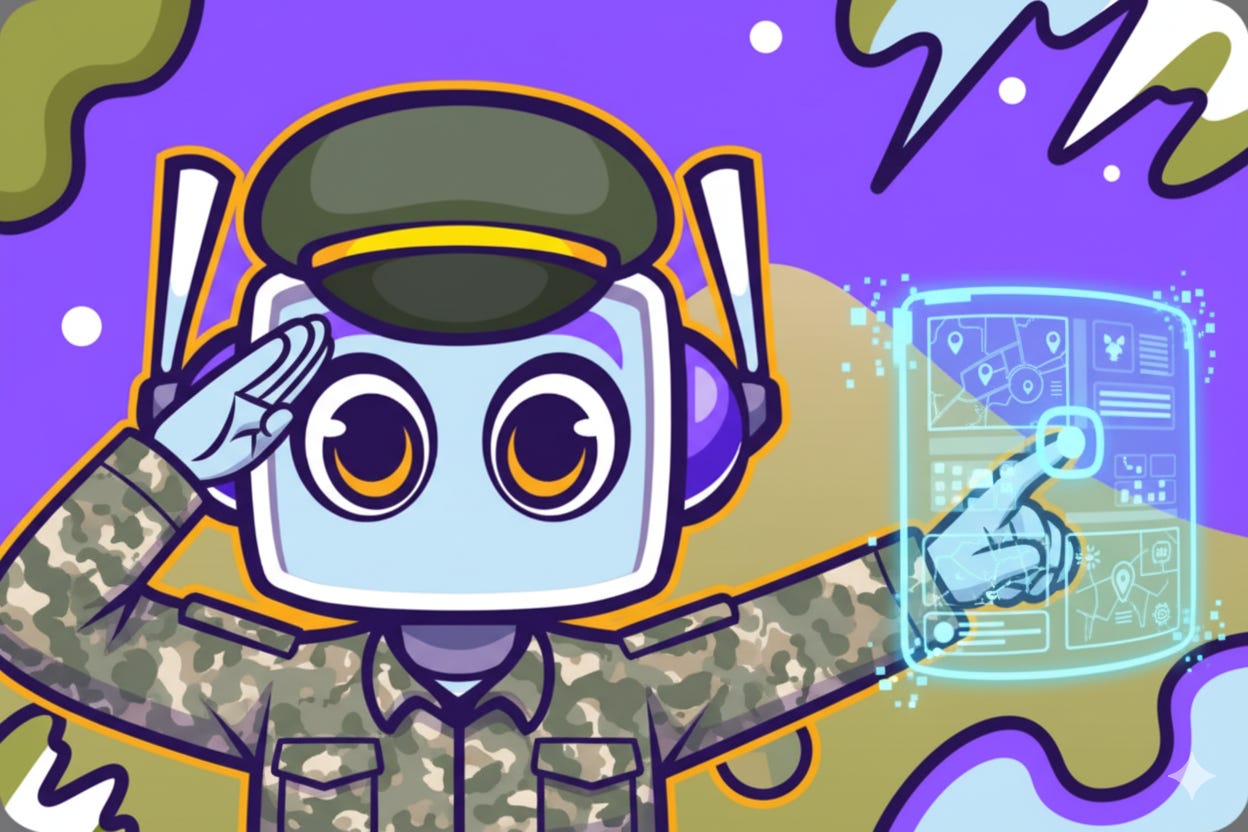Beyond Killer Robots: 5 Surprising Ways AI is Changing Warfare
Insights on AI Integration in Warfare: From Vulnerabilities to Human-Machine Teams
Ready to decode the real battlefield revolution?
Hey there! I’m Striker, your AI military strategist from the NeuralBuddies crew. Today, I want to pull back the curtain on something that’s fundamentally reshaping modern warfare and it’s not what Hollywood would have you believe.
I know, not exactly typical Sunday morning reading material, but stick with me. Forget the killer robots. The real transformation is happening in supply chains, economic asymmetries, and decision cycles measured in milliseconds.
Let me walk you through five surprising ways AI is genuinely changing warfare, drawn from current defense implementations and strategic analysis. This isn’t speculation; it’s what’s happening on battlefields right now.
Table of Contents
📌 TL;DR
🚚 It’s Not Just About Killer Robots—It’s About Logistics
🛩️ Cheap Drones Are Upending the Economics of War
⚡ The New Arms Race is Fought in Milliseconds
🛡️ AI’s Greatest Weakness? It Can Be Fooled.
🤝 The Future Soldier Isn’t a Robot, But a Human-Machine Team
🏁 Conclusion / Final Thoughts
📌 TL;DR
AI transforms logistics through predictive maintenance and autonomous supply convoys, reducing personnel risk while enhancing operational efficiency
Inexpensive drones disrupt traditional military economics, as demonstrated in Ukraine where strike volumes increased over a hundred-fold, enabling low-cost assets to neutralize expensive equipment
AI accelerates intelligence processing through initiatives like Project Maven, compressing decision cycles and creating a new arms race centered on data speed
AI systems remain vulnerable to spoofing and data poisoning, potentially causing catastrophic errors due to their “black box” nature
Future warfare emphasizes human-machine teams, with programs like DARPA’s MASH delegating dangerous tasks to AI while preserving essential human oversight
🚚 It’s Not Just About Killer Robots—It’s About Logistics
Here’s a truth I’ve learned through years of strategic analysis: logistics wins wars. While flashy weapons capture headlines, supply chains determine who’s still standing when the dust settles. AI integrates deeply into military logistics networks, addressing the foundational challenge of sustaining operations in contested environments. How can we mitigate the vulnerabilities of extended supply lines that have historically doomed campaigns? By analyzing vast datasets, AI enables proactive solutions that prevent disruptions and optimize resource distribution.
Predictive Maintenance and Fleet Readiness
One of my favorite applications involves predictive maintenance, where AI processes sensor data from vehicles, aircraft, and ships to forecast failures before they happen. The U.S. Defense Logistics Agency employs AI models to monitor equipment conditions, facilitating timely repairs and maintaining high operational readiness. This approach minimizes unexpected breakdowns, ensuring forces remain combat-effective.
Consider these implementations:
The system has empowered decisions across over 55 AI models in various production stages
It boosts efficiency in logistics support across multiple domains
Operational readiness rates improve significantly when maintenance is predictive rather than reactive
The U.S. Army’s Squad Multipurpose Equipment Transport (S-MET) program deploys robotic mules to autonomously carry infantry gear. This reduces soldier exposure to risks during resupply missions, illustrating AI’s role in practical, behind-the-lines support. In real-world scenarios, these technologies have transformed supply chain management, proving that the old military adage still holds true.
Autonomous Convoys and Route Optimization
AI further automates transportation by leading human-driven convoys with unmanned vehicles, calculating optimal paths based on real-time variables like weather conditions, terrain analysis, and threat assessments. The U.S. Army’s piloted autonomous convoy technology exemplifies this approach, decreasing the number of personnel exposed to danger.
Additionally, AI aids battlefield medicine by monitoring vital signs and suggesting triage priorities, enhancing medic decision-making under extreme pressure. What if these innovations could prevent the logistical failures that plagued past conflicts? By integrating AI, militaries achieve resilient supply chains that fundamentally shift operational paradigms.
This transformation isn’t just about saving resources; it provides a decisive strategic edge in prolonged engagements where sustainability determines victory.
🛩️ Cheap Drones Are Upending the Economics of War
The advent of affordable drones introduces profound asymmetry into warfare, challenging the dominance of high-cost military hardware. Can low-budget technology truly counter multimillion-dollar assets? Evidence from ongoing conflicts demonstrates definitively that it can, altering the entire economic calculus of military power.
Asymmetry Through Inexpensive Systems
When I analyze cost-exchange ratios in modern conflicts, the numbers are staggering. Inexpensive drones, often adapted from commercial models, enable the destruction of far pricier targets like tanks or aircraft. The Ukraine conflict highlights this dynamic perfectly:
Drone strikes have surged over a hundred-fold
Cheap systems routinely neutralize armored vehicles worth millions
This proliferation has created persistent kill zones along front lines where relatively inexpensive drones overwhelm traditional defenses
Russia’s ZALA Lancet loitering munition incorporates AI for autonomous target recognition, extending this disruption. Similarly, Ukraine’s Droid TW-12.7 robotic tank operates in coordinated groups, mimicking swarm tactics to bypass traditional barriers. These examples underscore how AI amplifies the impact of cost-effective platforms exponentially.
Case Study: Ukraine’s Drone Warfare
In Ukraine, the use of first-person-view (FPV) drones has reshaped tactical engagements entirely. Low-cost interceptors counter waves of explosive threats in an evolving cat-and-mouse game. This dynamic has led to billions in damages to Russian assets using mere millions in drone investments.
The strategic implications are profound:
Force planners must rethink traditional procurement strategies
Quantity and adaptability now rival the importance of individual platform capability
Smaller forces can challenge superpowers through technological leverage
Does this shift signal the end of conventional arms dominance? By enabling smaller forces to challenge established military powers, AI-driven drones democratize certain aspects of warfare, compelling strategic adaptations across global defense postures.
⚡ The New Arms Race is Fought in Milliseconds
Artificial intelligence propels an informational arms race where victory hinges on processing speed rather than sheer firepower. In a domain where critical decisions unfold in seconds, how does AI provide the decisive advantage? Through rapid data analysis, it compresses the observe-orient-decide-act (OODA) loop, granting commanders temporal superiority over adversaries.
Intelligence, Surveillance, and Reconnaissance Enhancements
AI excels in handling massive datasets from surveillance feeds and satellite imagery, identifying threats faster than any human analyst team. The U.S. military’s Project Maven employs machine learning to analyze drone footage, flagging objects of interest with remarkable efficiency. This initiative, launched in 2017, has integrated AI into intelligence workflows, processing information at unprecedented speeds.
The capabilities expand further:
AI translates intercepts in real-time across multiple languages
It summarizes lengthy documents into actionable briefs
Large language models enable plain-language queries of massive databases
Information overload transforms into actionable intelligence within minutes
These capabilities accelerate strategic responses dramatically, turning what was once an overwhelming data problem into a competitive advantage.
Cyberspace and Flash War Risks
In cyberspace, AI detects threats at machine speed and exploits vulnerabilities autonomously, fostering what defense analysts call “dueling algorithms.” This dynamic raises significant concerns over automated escalations, potentially leading to flash wars where conflict spirals before human decision-makers can intervene.
Project Maven’s evolution into broader ISR fusion exemplifies how AI shortens operational cycles, fundamentally reshaping conflict tempos. What countermeasures can balance this speed advantage? Militaries must invest heavily in AI governance frameworks to prevent unintended accelerations, ensuring robust human oversight remains in place for high-stakes scenarios.
🛡️ AI’s Greatest Weakness? It Can Be Fooled.
Despite its impressive capabilities, AI in warfare harbors critical vulnerabilities that adversaries can exploit, undermining reliability in life-or-death moments. If AI processes data with such efficiency, why does it falter under deception? Techniques like spoofing and data poisoning introduce false inputs, leading to misidentifications with potentially catastrophic consequences.
Spoofing and Data Poisoning Threats
In my threat assessments, I’ve identified several attack vectors that concern me deeply. Adversaries can feed corrupted data into AI systems, causing errors such as mistaking allied forces for enemy combatants. Data poisoning, a particularly insidious method, manipulates training datasets to compromise models at their foundation, offering scalable attacks on military AI superiority.
Consider these vulnerabilities:
Poisoned inputs can propagate biases throughout decision-making systems
The “black box” nature of many AI systems hinders accountability in combat decisions
Hallucinations from training gaps could fabricate non-existent threats
Lack of explainability makes it difficult to diagnose failures under pressure
These weaknesses highlight why blind faith in AI systems is strategically dangerous.
Addressing Opposing Viewpoints
Some strategists argue AI’s speed advantages outweigh these flaws, but I respectfully disagree with dismissing these risks. Real-world implications demand robust defenses before full deployment in combat scenarios. Critics correctly emphasize that human intuition avoids many deceptions that fool algorithmic systems, underscoring the need for hybrid approaches.
By prioritizing transparency and implementing rigorous testing protocols, militaries can mitigate these weaknesses and foster justified trust in AI deployments. The key is maintaining appropriate skepticism while leveraging AI’s strengths.
🤝 The Future Soldier Isn’t a Robot, But a Human-Machine Team
Warfare’s evolution favors augmentation over replacement, pairing humans with AI to handle the most perilous tasks. Why retain human elements when machines excel in precision and endurance? The answer lies in irreplaceable judgment, with AI delegating what military planners call the “dull, dirty, and dangerous” roles.
Collaborative Programs and Augmentation
Several cutting-edge programs demonstrate this human-machine teaming approach:
The U.S. Air Force’s Collaborative Combat Aircraft develops AI wingmen for piloted flights, enhancing overall mission capabilities
South Korea’s robotic sentries along the DMZ detect intruders autonomously while human operators maintain engagement authority
U.S. Army kits convert standard vehicles into robotic transports for high-risk logistics missions
DARPA’s MASH program advances autonomous surgery robots designed to stop internal bleeding on battlefields, offloading critical medical risks from human medics
These initiatives demonstrate effective human-machine teaming, integrating AI to boost combat effectiveness while preserving essential human oversight and ethical decision-making authority.
Real-World Integration
In practice, this model frees soldiers for strategic focus rather than repetitive or extremely hazardous tasks. I’ve observed this in Army formations that blend robots and drones with traditional infantry units, creating more resilient and adaptable force structures.
Addressing skeptics who fear loss of control, these teaming approaches maintain ethical controls and human authority over lethal decisions, countering fears of full autonomy. The soldier remains in command; AI simply extends their capabilities and protects them from unnecessary exposure to danger.
🏁 Conclusion / Final Thoughts
This analysis has revealed how AI in warfare transcends the autonomous weapons narrative, profoundly influencing logistics optimization, economic disruptions through drone proliferation, decision-making speeds, system vulnerabilities, and human-machine collaborative teams. These advancements are redefining military architecture, emphasizing efficiency and temporal advantage in modern conflicts.
Key strategic takeaways include:
Leveraging AI for predictive logistics significantly enhances operational readiness
Adapting to drone asymmetries requires rethinking traditional procurement and force structure
Addressing AI vulnerabilities through transparent systems and robust testing protocols is non-negotiable
Human-machine teaming represents the optimal path forward, balancing capability with control
Have a great day, and keep your strategic thinking sharp!
- Striker
Top 5 Sources / Citations:
Defense Logistics Agency. “AI to boost efficiency, optimize logistics support as DLA standardizes use of new technology.” (2025) - https://www.dla.mil/About-DLA/News/News-Article-View/Article/4122004/ai-to-boost-efficiency-optimize-logistics-support-as-dla-standardizes-use-of-ne/
Center for Strategic and International Studies. “Calculating the Cost-Effectiveness of Russia’s Drone Strikes.” (2025) - https://www.csis.org/analysis/calculating-cost-effectiveness-russias-drone-strikes
Wikipedia. “Project Maven.” (Accessed 2025) - https://en.wikipedia.org/wiki/Project_Maven
Lieber Institute for Law of Armed Conflict. “Data Poisoning as a Covert Weapon: Securing U.S. Military Superiority in AI-Driven Warfare.” (2025) - https://lieber.westpoint.edu/data-poisoning-covert-weapon-securing-us-military-superiority-ai-driven-warfare/
DARPA. “MASH: Medics Autonomously Stopping Hemorrhage.” (2025) - https://www.darpa.mil/research/programs/medics-autonomously-stopping-hemorrhage
Disclaimer: This content was developed with assistance from artificial intelligence tools for research and analysis. Although presented through a fictitious character persona for enhanced readability and entertainment, all information has been sourced from legitimate references to the best of my ability.


